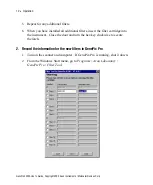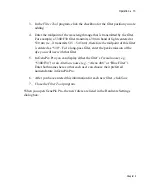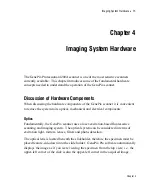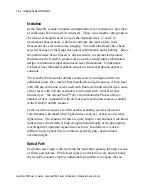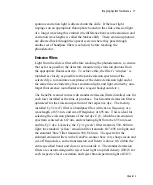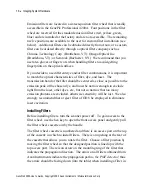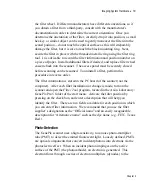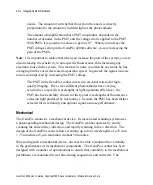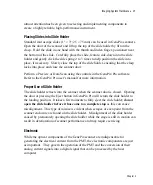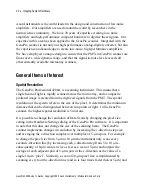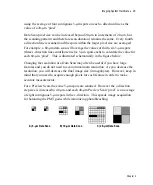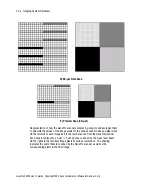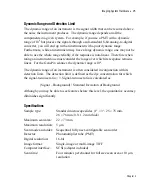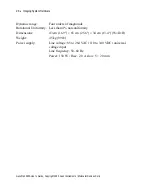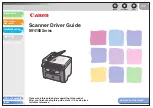
Imaging System Hardware
•
17
spurious excitation light is directed onto the slide. If the laser light
impinges on an appropriate fluorophore bound on the slide, emission light
of a longer wavelength is emitted (the difference between the emission and
excitation wavelengths is called the Stokes shift). These emission photons
are directed back through the optical system where they pass through
another set of bandpass filters (see below) before reaching the
photodetector.
Emission Filters
Light from the slide is filtered before reaching the photodetectors, to ensure
that as far as possible, the detectors measure only emission photons from
the appropriate fluorescent dye. To achieve this, the filter’s ‘window’ is
matched as closely as possible to the peak emission spectrum of the
selected dye, to maximize acceptance of the desired emission light and at
the same time exclude stray laser excitation light, and light emitted by non-
target fluorescence (autofluorescence, reagent background etc.).
The GenePix scanner comes with standard emission filters installed, one for
each laser installed at the time of purchase. Each standard emission filter is
optimized for the emission spectrum of the respective dye. The factory-
installed Cy5 (‘red’) filter is a bandpass filter with cut-on frequency at a
wavelength of 655 nm, and cut-off frequency at 695 nm. This is ideal for
selecting the emission photons of the red dye Cy5, which has an emission
spectrum centered on 667 nm, and excluding light from the 635 nm laser
and the Cy3 dye. Likewise, the Cy3 (‘green’) filter transmits 550–600 nm
light; the standard ‘yellow’ emission filter transmits 607–695 nm light; and
the standard ‘blue’ filter transmits 508–560 nm. The spectra for the
standard emission filters in the GenePix scanner have very sharp cut-on and
cut-off frequencies, so the transmission coefficient is above 0.8 within the
entire specified band, and close to zero outside it. The standard emission
filters are custom-designed to reject laser light at optical density (OD) 8 for
each respective laser excitation, and reject broad-spectrum light at OD 5.
Chapter 4










